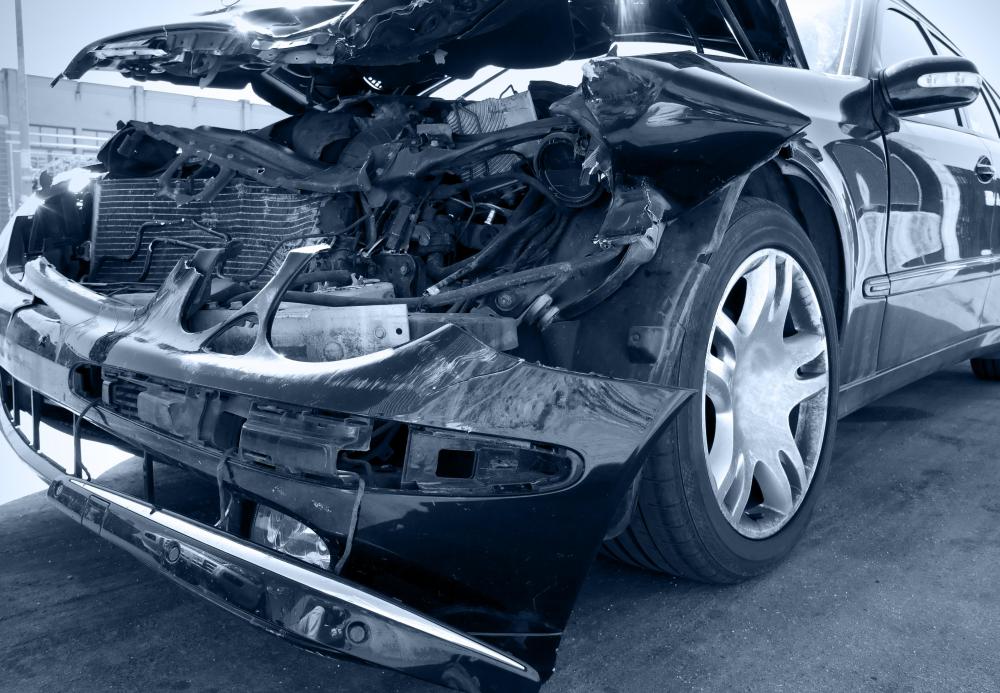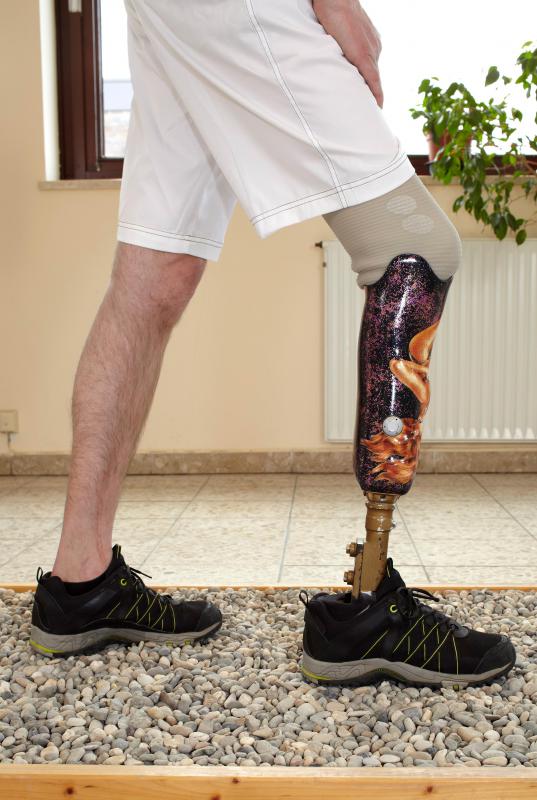At WiseGEEK, we're committed to delivering accurate, trustworthy information. Our expert-authored content is rigorously fact-checked and sourced from credible authorities. Discover how we uphold the highest standards in providing you with reliable knowledge.
What is a Traumatic Amputation?
A traumatic amputation is an amputation — the partial or complete removal of a body part — which occurs outside of a controlled, medical environment. This type of amputation is often the result of an accident, such as a car crash or loss of control of a power tool. Amputation of this kind can also be the result of a natural disaster or a violent act such as battlefield combat. A traumatic amputation may become complicated by the presence of other factors such as severe bleeding or a person going into shock.
Sometimes called an accidental amputation, a traumatic amputation can occur in a number of different ways and to different parts of a person’s body. This type of amputation is often caused due to an accident, usually involving a vehicle or the use of tools and power equipment. The proper use of safety equipment, such as seat belts in a car or protective shields on powered hand saws, can help prevent accidents that may cause the loss of a body part.

There are a number of different types of amputation from trauma that can occur, which are often divided into either proximal or distant amputations. A proximal amputation is the disconnection of a body part that is close to the core of a person’s body, such as the amputation of an arm at the shoulder. Distant amputations occur with body parts farther from a person’s core, such as the loss of a foot at the ankle or a finger.

An amputation can either be partial, often called incomplete, or complete. Partial amputation means that the amputated body part is still connected to the body in some way, either through muscle or other tissue. Complete amputation means that the body part is entirely severed from the body and is in no way connected after the accident.
After a traumatic amputation occurs, a number of steps should be taken to ensure the health and safety of a person. The person should be resuscitated if necessary, and bleeding at the site of the amputation should be slowed to avoid excessive loss of blood; this can be done by raising the area of the amputation to reduce bleeding. There is a very real risk of someone going into shock after traumatic amputation, so care should be taken to avoid this by raising a person’s legs if possible and covering him or her with a blanket.

An effort should be made to locate the amputated part, though only after ensuring the well-being of a victim. The amputated body part should be placed in a bag and stored in cold water or ice to preserve the tissue; this can increase the chance of reattaching the part. Reattachment is not always the best choice, however, and the use of a functional prosthetic can be preferable to the reattachment of a non-functional limb.
AS FEATURED ON:
AS FEATURED ON:













Discuss this Article
Post your comments